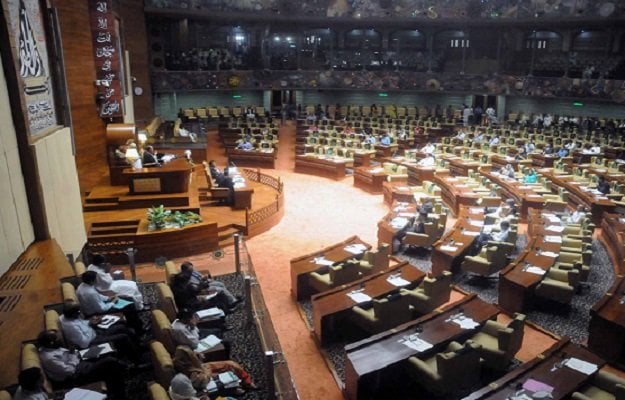
In Pildat’s Comparative Score Card, the Sindh Assembly was given a score of 68 per cent for its overall performance. The provincial assemblies of Khyber-Pakhtunkhwa (K-P) and Punjab shared the second spot with overall score of 66%, each.
While the three assemblies improved their performance from their previous score, Balochistan’s score went even further down with a score of only 35%; last year it obtained 39%.
The report did not include the performance of the Gilgit-Baltistan Assembly.
Punjab Assembly took the lead in terms of number of bills passed during the parliamentary year with 46 bills, followed by Sindh and Balochistan with 28 and 23 bills respectively. Only 18 bills were passed by K-P.
In terms of number of private members’ bill passed, Sindh Assembly outdid all other assemblies with nine private bills, while K-P and Punjab assemblies introduced one private bill each. No private member bill was passed by the provincial assembly of Balochistan.
For the third consecutive year, Punjab Chief Minister Shahbaz Sharif remained the worst offender in terms of absence from assembly proceedings, attending only 5% of the sessions.
Despite a change in Balochistan’s chief minister post, with Nawaz Sanaullah Zehri taking over from Dr Abdul Malik Baloch, both chief ministers’ posted highest combined attendance of 59%. Sindh Chief Minister Syed Qaim Ali Shah attended 51% of the sessions.
With an average attendance of 34% of total members of the assembly per sitting, the provincial assemblies of Sindh and Balochistan took the top spot in attendance. K-P came in second with 32%. Following its chief minister’s lead, attendance in Punjab assembly remained the lowest with just 13% members attending sessions.

During the parliamentary year 2015-16, Punjab Assembly met 75 times which culminated into 193 working hours, followed by Sindh, which met for 182 hours over 59 sittings. K-P Assembly remained in session for 126 hours with 51 sittings, while Balochistan Assembly met for just 95 hours over the course of 46 sittings.
In terms of average working hours per each sitting, Sindh Assembly led with an average of 3.1 hours per sitting, followed by Punjab with 2.6 working hours per sitting. K-P Assembly spent 2.5 hours on average per sitting. Despite some improvement from last year, Balochistan Assembly’s performance remained the weakest with the average of just 2.1 hours spent per sitting; last year it was 1.57 hours.
The provincial assemblies of K-P and Punjab scored the highest on transparency and accessibility, with both receiving scores of 90%, followed by Sindh with 45%. Balochistan Assembly scored just 20% as oppose to last year’s 41%.

1725443747-0/Untitled-design-(5)1725443747-0-165x106.webp)


1724238420-0/Untitled-design-(3)1724238420-0-165x106.webp)











COMMENTS (3)
Comments are moderated and generally will be posted if they are on-topic and not abusive.
For more information, please see our Comments FAQ